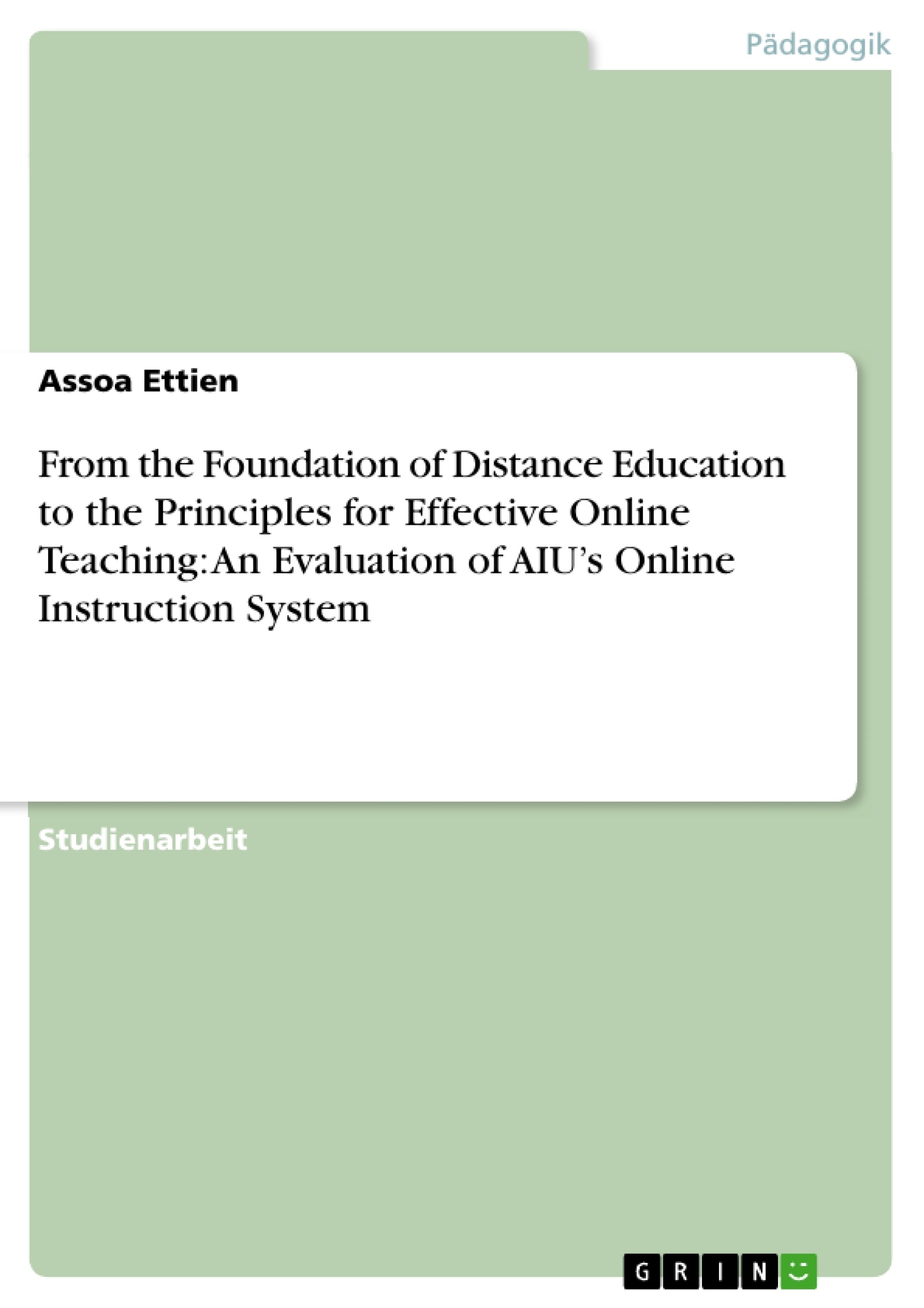Leseprobe
Inhalt
A. Introduction:
B. Historical Description of Distance Education:
1.) The Long Journey to E-learning:
1.a) The First Generation of Distance Education:
1.b) The Second Generation of Distance Education:
1.c) The Third Generation of Distance Education:
2.) Partial Conclusion:
C. General Analysis:
D. Actualization:
E. General Recommendation:
F. General Conclusion:
References
A. Introduction
Viewed as an important component of Education Globalization, Distance Education is nowadays used by several millions people around the world. The ease offered by Distance Education makes the numbers of participants getting higher and higher. However, its particularly individualized nature hardly enables those who are not closely involved to have a clear idea of how fast and how far Distance Education is being developed.
If for the moment it is difficult to state accurately the exact number of those who are engaged in distance Education around the globe, we can at least have an idea through Kingston whose estimation of the higher Education market is USD 300 billion (Kingston, 1999).
This astronomic figure of the capital value of Distance Education means that the topic under study, that is to say, “From the Founding of Distance Education to the Principles for Effective Online Teaching: An Evaluation of AIU’s Online Instruction System” deserves to be dealt with, regarding the number of people interested in Distance Education.
This piece of work will present first, the historical description of Distance Education that lead to e-learning as well as the “back up” technology. After this we will initiate a brief analysis of the principles that contribute in acquiring the craft of a good online instructor. Afterwards, a brief attempt of actualization will lead to some recommendations for e-learning improvement. A general conclusion will put an end to this paper.
B. Historical Description of Distance Education
The history of Distance Education is closely related to the evolution of the different communication means as well as that of information technology. Indeed, (Jennifer Sumner, 2000) states this constant link between technology and Distance Education. For this researcher technology plays a mediation role between the learner and the instructor in the process of learning through Distance Education.
(Bates, 1993) was already supporting this point by presenting the growing accessibility of communication and information technology, to “a greater ease of use”, such an ease, is certainly what explains the increasing needs and use of Distance Education.
This interconnection between Distance Education and technology being briefly made, our next target is to focus our interest on the historical background of technology that permitted the first stage of Distance Education.
1.) The Long Journey to E-learning:
The early days of Distance Education were related to the development of the postal services as a worldwide system. This was simply possible because with the industrial revolution, there was an increasing need to fight adult illiteracy and the best way to help adult learners engage in new learning and at the same time keep their job was through Distance Education. For Jennifer Sumner,( 2000) there were three generations of Distance Education.
1.a) The First Generation of Distance Education:
This need was first felt in the industrialized world. That is the reason why the first official Distance Learning institution was created in Great Britain by Isaac Pitman in 1840 according to Jean-Claude Marot and Anne Darnige ( Dec. 1996).
Later, in 1856, Berlin experienced the birth of its institute specialized in teaching languages through Distance Learning. The year 1881was that of the creation of “l’école pour soi” by Leon Eyrolles. Then, in 1907 witnessed the creation of ‘’l’école universelle”, followed in 1919 by the first institution of technical education through Distance Education(Jean-Claude Marot et Anne Darnige, 1996).
The above Distance Education type was what (Jennifer Sumner, 2000) presented as the first generation of Distance Education. Its main characteristic feature is that Education is distributed through the postal services, or by correspondence. The usual term for this first generation Distance Education was “correspondence Education”. How about the second generation of Distance Education?
1.b) The Second Generation of Distance Education:
Nipper (1989) and Holmberg (1989) rightly associated the birth of the second generation of Distance Education with the discovery and the development of new technologies such as the broadcast media, the tape recorder and cassettes players.
As for Jean-Claude Marot and Anne Darnige (Dec.1996), they pointed at the 78T discs as the key invention that permitted the use of Multi-media for Distance Education. This was possible from 1920 and this system was massively used in 1940 in France, during the Second World War to relieve the burden on the few schools in the free zone by training 1413 Learners.
Still according to the above source, from 1944 to 1971 the tape recorder and television were used for Distance Education purposes. In 1969 UNESCO decided to launch a vast program that consists in using television for Education Purposes in developing countries. That was a way to harmonize teaching contents from a unique broadcasting source. One year later in Spain, the National university for Distance Education was created followed another year later, in 1972 by the creation of the Open University in Great Britain, considered as the archetype of the second generation of Distance Education and which used to combine television, radio, video, audio tapes, and the dispatching of printed papers. That was the Era of the multi-media revolution. Our next concern is to show what technology will be used during the third generation of Distance Education ?
1.c) The Third Generation of Distance Education:
Noble (1995), stated the third generation of Distance Education in the period that he calls the Era of the second industrial revolution. When was that? Noble replied that it was the beginning of the twenty first century, characterized as the information age
- Arbeit zitieren
- Assoa Ettien (Autor:in), 2010, From the Foundation of Distance Education to the Principles for Effective Online Teaching: An Evaluation of AIU’s Online Instruction System, München, GRIN Verlag, https://www.grin.com/document/156463
Kostenlos Autor werden






















Kommentare